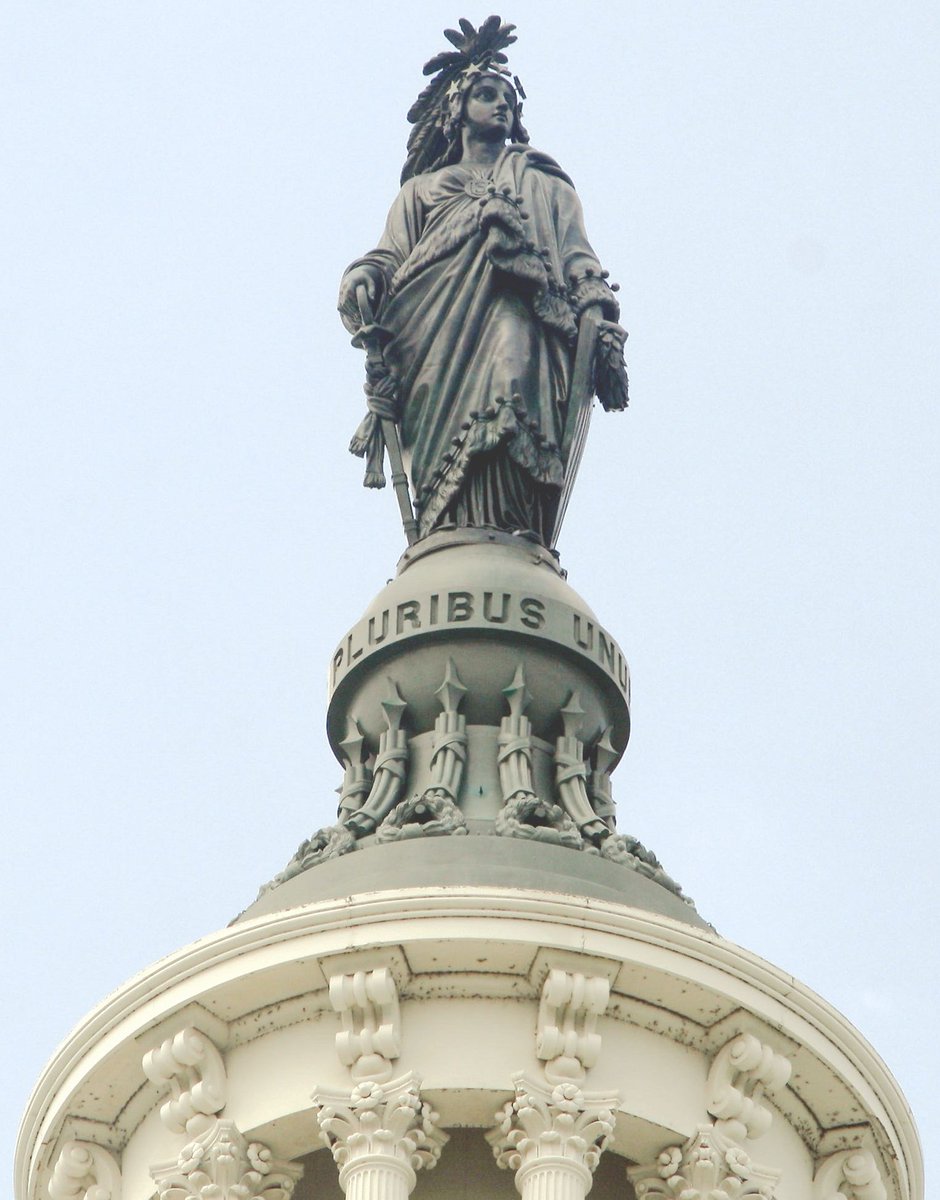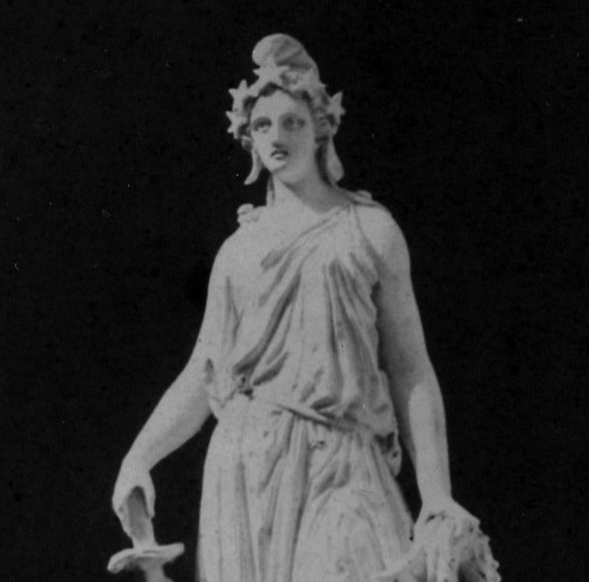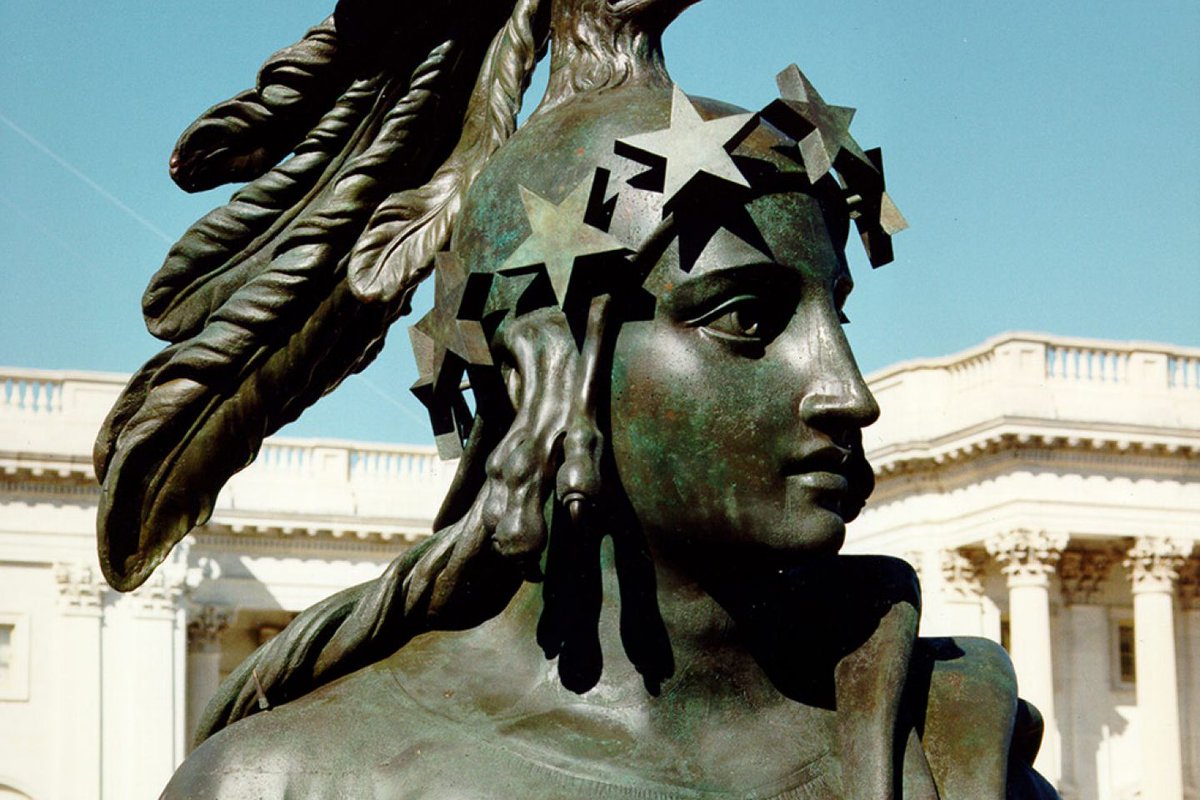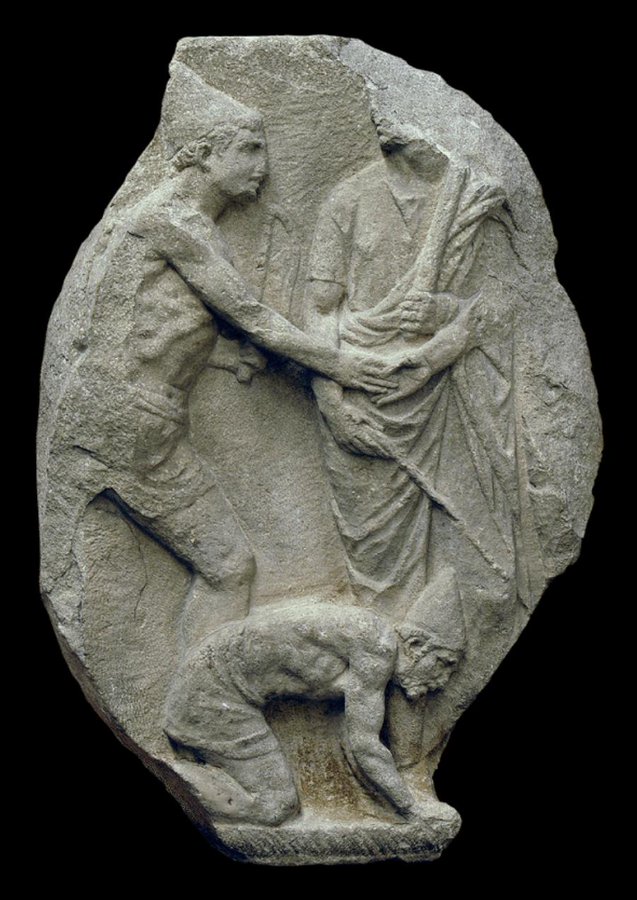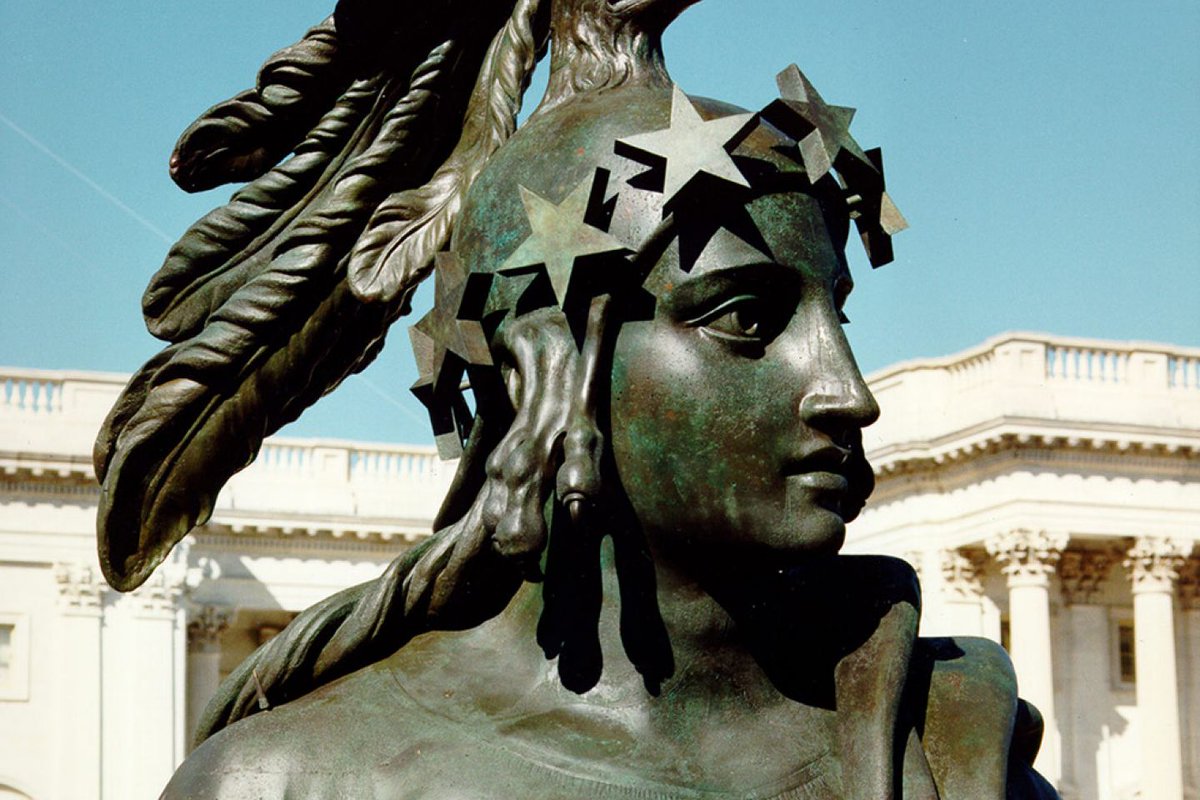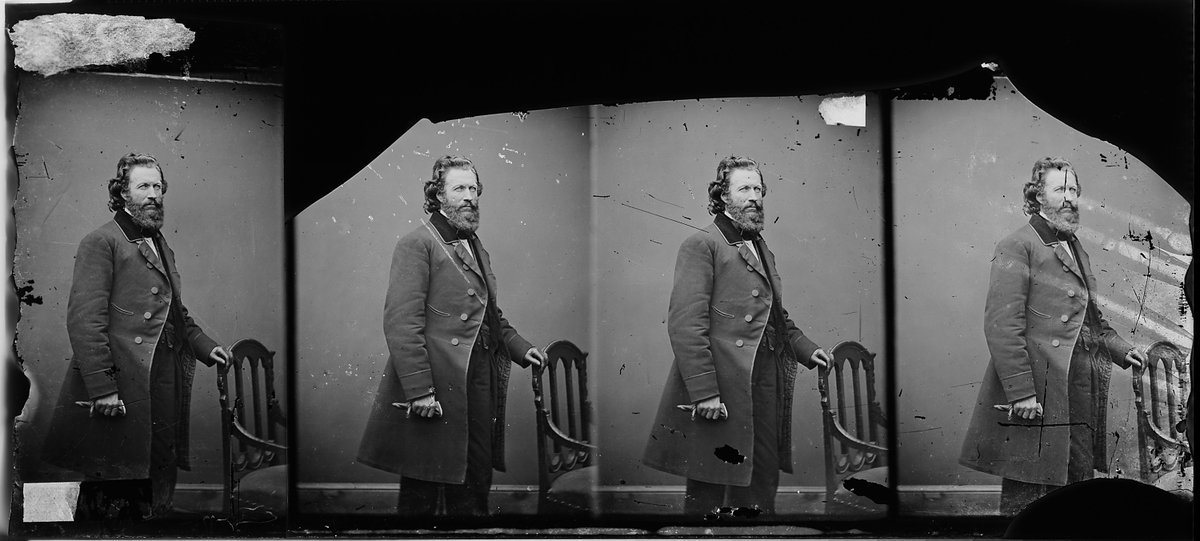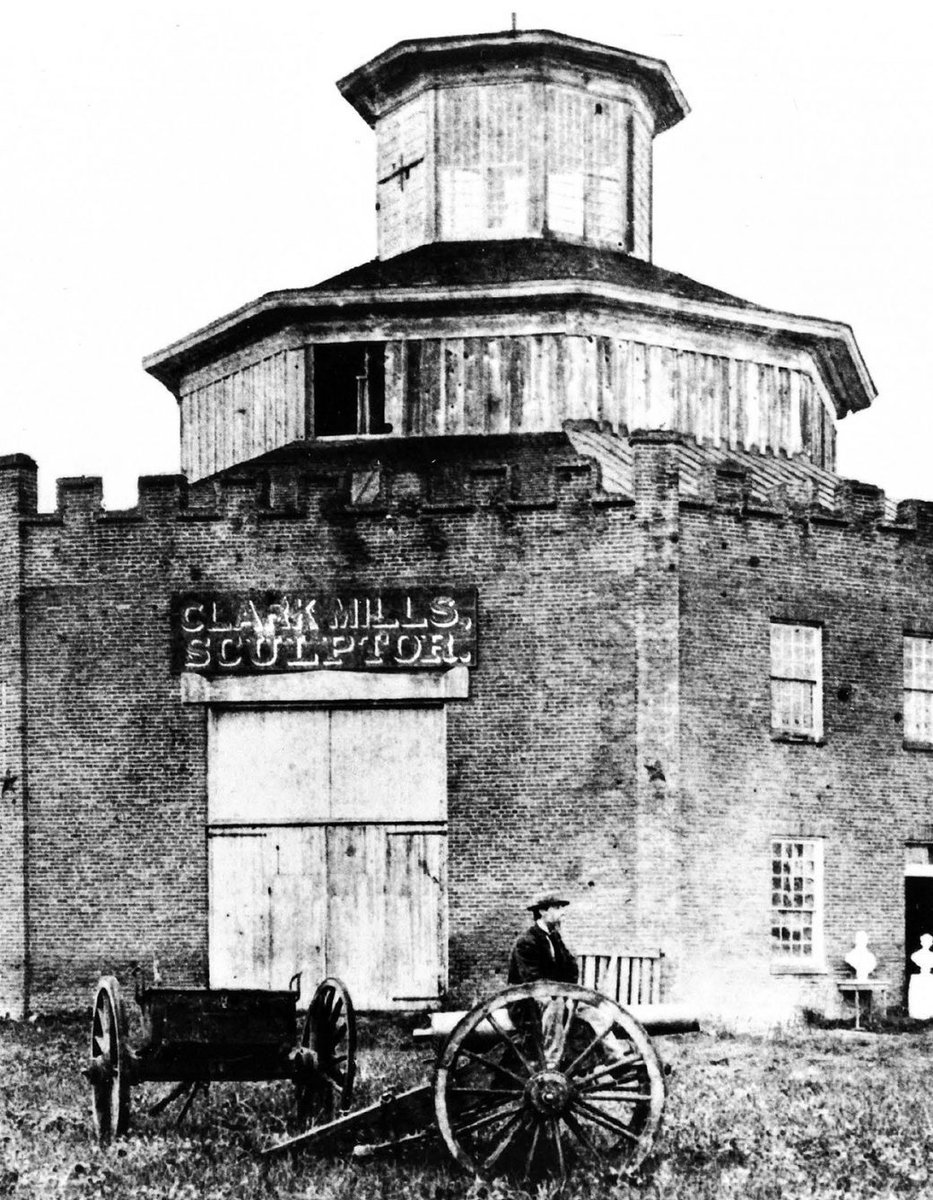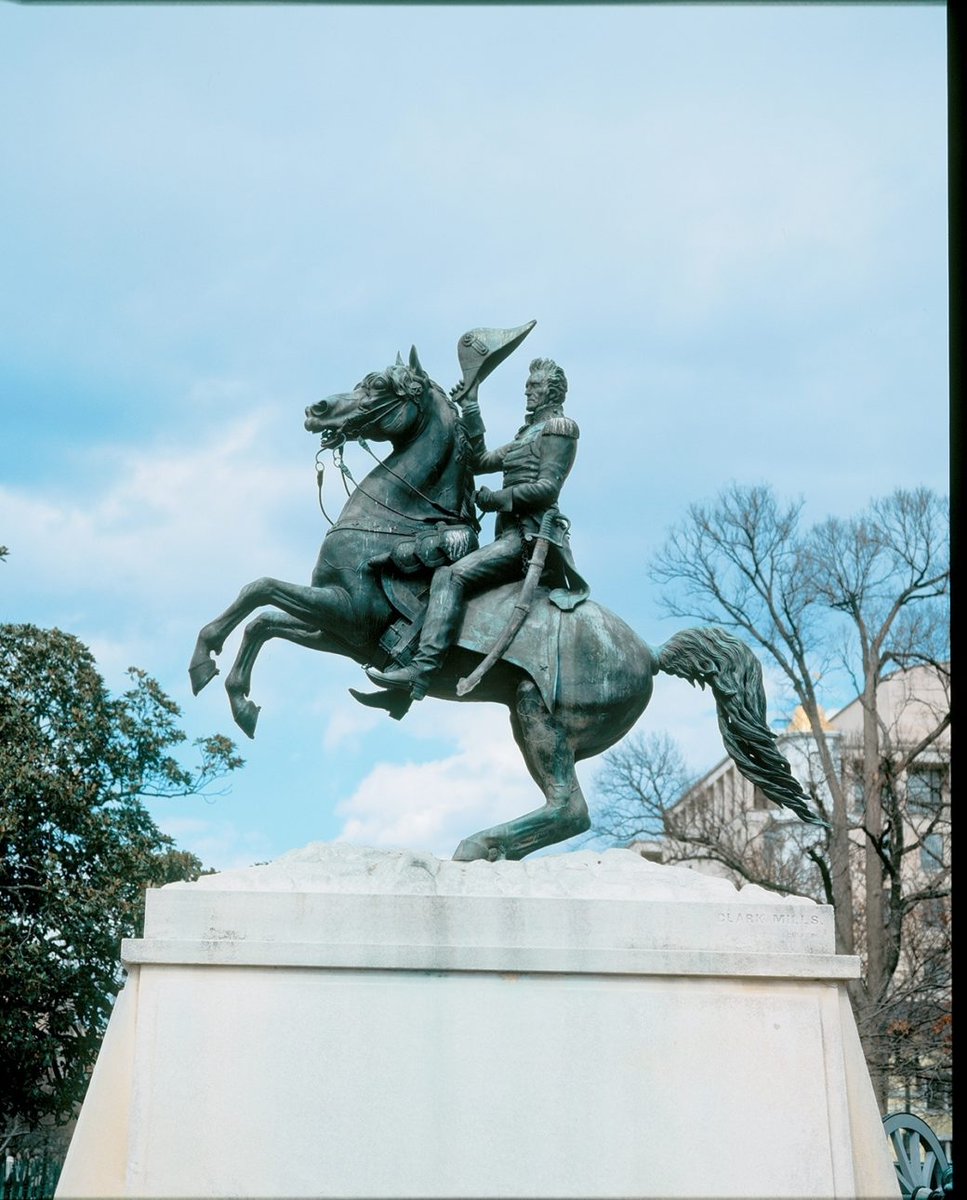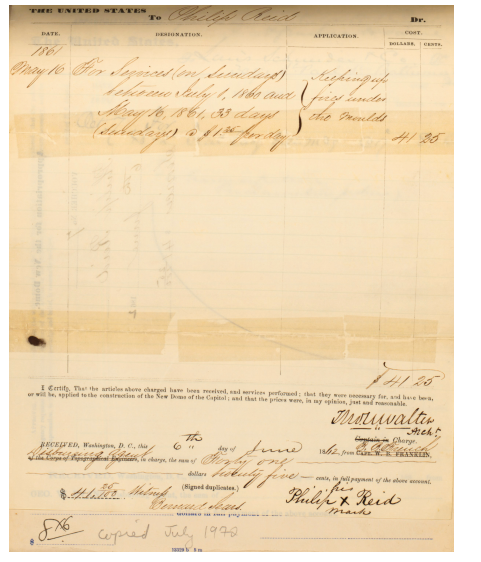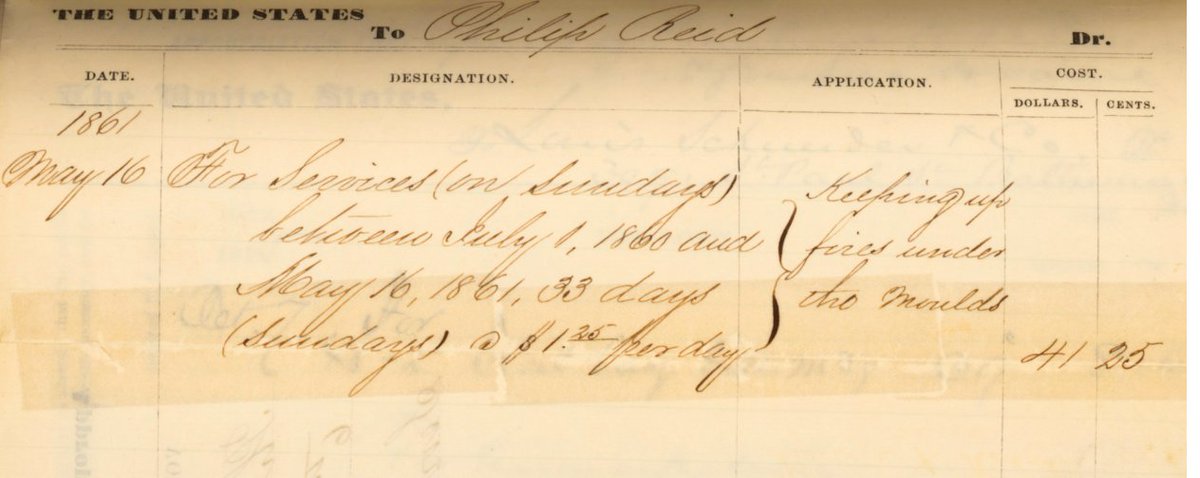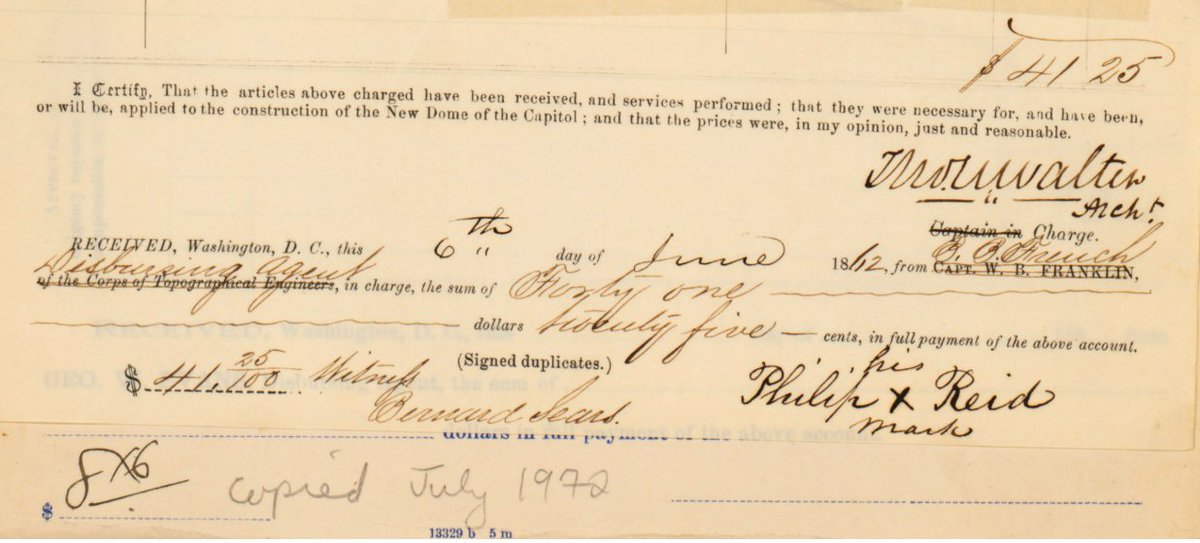Want to know more about how white supremacy is baked in to the US Capitol Building? Let's think about the statue topping its dome. She symbolizes Freedom... and was made in part by Philip Reed, an enslaved man. (Thread)
Thomas Crawford was commissioned to sculpt Freedom in 1854 - but he had to redo his original design (left) after Jefferson Davis threw a temper tantrum about... her hat.
The future president of the Confederacy was then the Secretary of War and oversaw the expansion and decoration of the Capitol Building. He used his position made sure that none of the new sculptures and paintings for the building criticized slavery.
Davis was especially on the lookout for the “liberty cap,” which had symbolized freedom since ancient Rome, when it was given to newly freed people during emancipation ceremonies. See https://twitter.com/SarahEBond/status/1146370807758807040?s=20
But Davis kept vetoing any drawing that included the liberty cap, which he claimed was “inappropriate to the people who are born free.” He ordered Crawford to give Freedom a helmet to show that “her cause [is] triumphant.”
Why was Davis afraid of a hat? It symbolized not just freedom but also emancipation. Davis didn't want federal art to signal that the people currently enslaved in America could one day become free. He wanted American freedom to be reserved for people like him.
Crawford obeyed, ultimately giving Freedom headgear that looks more like what a Vegas show girl would wear than a warrior, with a starry headband topped with feathers sprouting from a rather popeyed eagle.
Once Crawford's model was complete, the government had hired a sculptor named Clark Mills to cast Freedom in bronze at his foundry just outside Washington.
Mills purchased Philip Reed in Charleston, as the sculptor recalled, “when he was quite a youth… because of his evident talent” for his business. Reed would have lost contact with everyone he had known when Mills took him to live in Washington.
Reed worked hard in a profession that is hazardous enough when everyone knows what they are doing, which was definitely not the case in Mill’s foundry. Reed had helped Mills cast the very first bronze statue ever made in America - their President Jackson still stands near the WH.
Mills won this commission even though he had never seen a monumental bronze sculpture, much less made one. When he succeeded, the monument made Mills famous. He used his new wealth to purchase at least four more people.
Reed is recorded as “keeping up fires under the moulds” of Freedom. Up to 4,000 pounds of molten metal would be poured hissing into the five molds, shaped from a mixture of sand and dung, that formed the sculpture. Reed had to make sure they dried properly.
If Reed did his job perfectly, a mold would break apart when the metal cooled to reveal a piece of Freedom.
But if he failed – if the mold over-dried into brittleness or retained secret pockets of moisture – it could explode, sending molten metal shooting through the workshop.
But if he failed – if the mold over-dried into brittleness or retained secret pockets of moisture – it could explode, sending molten metal shooting through the workshop.
Reed's eyes would have watered from the smoke and the stench of the drying horse dung. His back would have ached from carrying fuel and stooping to tend the fire. But he worked seven days a week for nearly a year to make Freedom.
We know this because of this payment record. The government paid the wages of Mills’ workman, including Reed - $1.25 a day. But Reed kept only the money he earned on Sundays. Every other day, the wages he earned belonged to Mills.
Reed became a free man on April 16, 1862, when Lincoln signed the District of Columbia Emancipation Act. He was 42 years old.
Mills petitioned the government to be reimbursed for the loss of $1,500 Reed’s emancipation meant for him. Mills claimed a total of $5,250 for the 11 people he owned in April 1862, including $50 for Emily Howard, “3 months old, all black color, sound and healthy.”
Freedom finally rose to the top of the Capitol dome in December 1863, marking the end of the year that had begun with the Emancipation Proclamation, and was immediately hailed as a symbol of emancipation.
But as the contrast between the treatment of BLM protestors and the rioters who stormed the Capitol yesterday show, Davis' insistence that freedom isn't for everyone still rules too much of our country.
Some of my sources for this thread:
Vivian Green Fryd, Art and Empire: The Politics of Ethnicity in the United States Capital, 1815-1860 - https://www.amazon.com/Art-Empire-Ethnicity-Perspective-Architect/dp/0821413422
Petition of Clark Mills - http://civilwardc.org/texts/petitions/cww.00741.html
Vivian Green Fryd, Art and Empire: The Politics of Ethnicity in the United States Capital, 1815-1860 - https://www.amazon.com/Art-Empire-Ethnicity-Perspective-Architect/dp/0821413422
Petition of Clark Mills - http://civilwardc.org/texts/petitions/cww.00741.html
Megan Smolenyak, “Philip Reed, the Slave Who Rescued Freedom” - https://books.google.com/books?id=u1i7lhKvCpwC&pg=PA53&lpg=PA53&dq=%E2%80%9CPhilip+Reed,+the+Slave+Who+Rescued+Freedom%E2%80%9D&source=bl&ots=VK17PDd8nr&sig=ACfU3U2OfEyiZ2-p9lvIUlRHnSW9zKyFTw&hl=en&sa=X&ved=2ahUKEwjDrpyQjYruAhUGGVkFHXLGCf0Q6AEwB3oECAoQAg#v=onepage&q=%E2%80%9CPhilip%20Reed%2C%20the%20Slave%20Who%20Rescued%20Freedom%E2%80%9D&f=false
“Philip Reid and the Statue of Freedom” - https://www.aoc.gov/explore-capitol-campus/art/statue-freedom/philip-reid
“Philip Reid and the Statue of Freedom” - https://www.aoc.gov/explore-capitol-campus/art/statue-freedom/philip-reid
Sarah Fling, "Philip Reed: Enslaved Artisan in the President's Neighborhood" - https://www.whitehousehistory.org/philip-reed
John Philip Colletta, “‘The Workman of C. Mills’: Carl Ludwig Richter and the Statue of Andrew Jackson in Lafayette Park” - https://www.jstor.org/stable/41317467?refreqid=excelsior%3Aa5eab3adc2ebcb715f3ff1b6b97dcbe2
John Philip Colletta, “‘The Workman of C. Mills’: Carl Ludwig Richter and the Statue of Andrew Jackson in Lafayette Park” - https://www.jstor.org/stable/41317467?refreqid=excelsior%3Aa5eab3adc2ebcb715f3ff1b6b97dcbe2
And there's a lot more on Reed, including some new discoveries I've made, in my forthcoming book.

 Read on Twitter
Read on Twitter